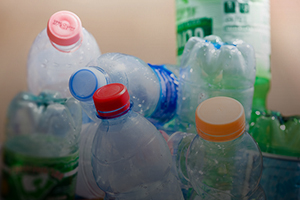Re-Recyclable Plastics

Finding ways to reduce plastic waste is a key imperative for environmental scientists. Even with increased compliance in recycling initiatives, only 20 to 30 percent of plastic is currently recycled, and the vast majority of that cannot be recycled more than once.
All plastics are made up of large molecules called polymers, which are, in turn, made up of shorter compounds called monomers. Depending on the desired characteristics of the end product (e.g., toughness, flexibility, hardness, clarity), different chemicals are added, and the bonds that link those chemicals to the monomers remain intact even after processing at a recycling plant. The problem is that when the plastics are then combined, it’s unknown what properties will emerge from the mix.
But recently, a team of researchers developed a new plastic called PDK (poly-diketoenamine), which can be recycled over and over. Through a simple process of immersing the plastic in acid, not only can the polymers be broken down into monomers, but the bonds between additives and the monomers can also be reversed. The monomers can then be recycled into polymers and eventually plastics with a whole new set of properties, and without inheriting properties from the original material.
As an alternative to many of the nonrecyclable plastics in use today, PDK could help divert much of the waste from landfills and oceans.
For information: Brett Helms, Berkeley Lab, Materials Science Division, 1 Cyclotron Road, Mailstop 67R6110, Berkeley, CA 94720; phone: 510-486-7729; email: bahelms@lbl.gov; Web site: https://www.lbl.gov/ or https://newscenter.lbl.gov/2019/05/06/recycling-plastic-from-the-inside-out/